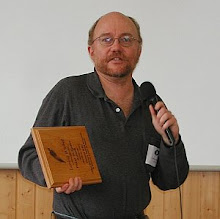 The biggest story in Honduras July 5 may not have been the numbers of people that surrounded the Tegucigalpa Airport, but the fact that so many of them left their guns at home. The situation in Urumqi, Xinjiang province in China may have been more violent, but the Uighur protesters were not idolizing their terrorist comrades who were recently sent to Bermuda from Guantanamo.
The biggest story in Honduras July 5 may not have been the numbers of people that surrounded the Tegucigalpa Airport, but the fact that so many of them left their guns at home. The situation in Urumqi, Xinjiang province in China may have been more violent, but the Uighur protesters were not idolizing their terrorist comrades who were recently sent to Bermuda from Guantanamo.For several decades now, followers of Gandhi have been hoping and wishing for a turn from revolutionary armed struggle to nonviolent mass movements. The global shift in favor of immovable bodies over guns was masked somewhat by the rise of catastrophist terrorists, beginning with Tamil suicide bombers and leading inevitably to September 11. But meanwhile, in the background, people on all continents seemed to be rejecting the effectiveness of armed struggle against an oppressive state. Part of the shift may have little to do with people seeing nonviolent methods as being effective, but with realizing that armed struggle in conditions of modern "asymmetric" warfare is as close to hopeless as one could imagine. And there seems to be fewer radicals outside the catastrophists who "celebrate the bullet."
I am not suggesting that this movement operates in all times at all places, nor am I saying that mass nonviolent struggle is always a romantic unconditional good. We will still see plenty of rebel movements arise in Africa, Latin America, and Asia, though many more in the 21st century seem to be financed by an opposing state, rather than rising indigenously from a group in the mountains espousing some kind of radical ideology. And if we look at Thailand, where two sides both employ relatively nonviolent mass-movement methods, each side is guilty of corruption and using the language of Thomas Paine to enrich themselves. Half the folks hollering "Power to the People!" may be hoping for a payoff or a date with Flo from Progressive Insurance.
But the fact that a movement in the heart of Central America, defined by its armed-struggle rebel groups in the 1980s, chose to operate in a way that emphasized nonviolent mass movements, is a positive sign that we are slowly moving beyond the gun in populist movements worldwide. This kind of trend was far more interesting in Iran (and probably will continue to be) than counting the number of protesters using Twitter or SMS. Now comes the hard part: sticking to the nonviolent principles while trying to disarm the people in power.








3 comments:
I have nothing intelligent to add. Just a loud HOORAH! to your excellent assessment, reflection, hope and realism.
Guns, unfortunately, cut both ways these days. Gun ownership and bearing of arms, particularly in the US, has become criminalized, and socially marginalized. So if in a critical situation a gun is shown, it is no longer an equalizer, or a simple means of vindication of rights, it is now seen as a pretext for murder or imprisonment. A freedom fighter chooses the gun these days at extreme peril.
That's why I've never advocated for gun control. I would never trust a government to remove guns. I prefer to let people choose when not to use them.
Post a Comment